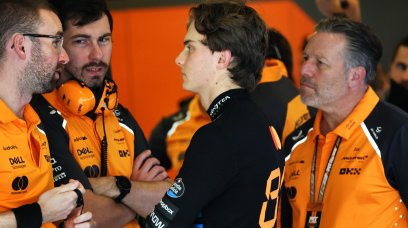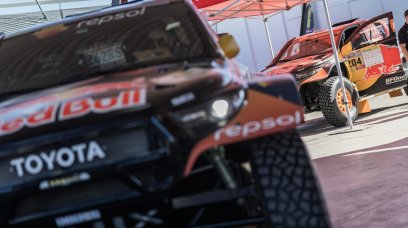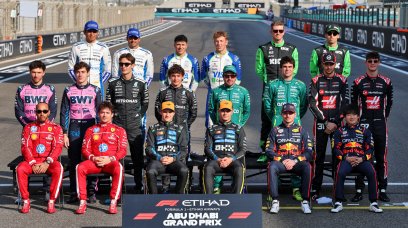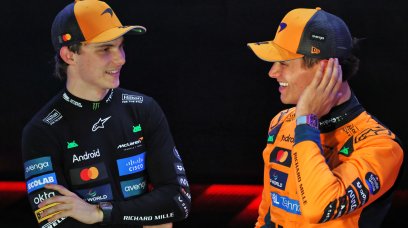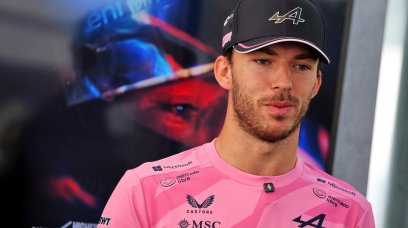Unless Formula 1 can somehow reverse engineer the laws of physics, the problem of spray created by cars in wet weather conditions is something that will continue to plague Grands Prix. You put a high-speed machine through water, it will get thrown up in the air and when you've got 20 of them doing the same thing, that is going to lead to visibility problems as drivers behind simply cannot see what is ahead as the wall of water lingers. It was partially for this reason that the 2021 Belgian Grand Prix was abandoned after no racing laps were complete as the spray thrown up by the cars was just too great to safely start the race, eventually leading to a one-lap event which will forever stand the test of time as the shortest Formula 1 Grand Prix. But in 2022, the problem seemed worse than ever, with the Japanese Grand Prix in particular being a Exhibit A, with F1 chiefs opting to trial a simple yet remarkably effective solution to try and reduce the spray and make conditions that slightly bit safer for the field, with hopes it could filter down the ranks. Wheel arches. They are being tested on Thursday, July 13th for the first time on track, at Silverstone by Mercedes and McLaren - with some drivers keen for an immediate introduction.
A science lesson from Isaac Newton
In 1686, Sir Issac Newton - he of gravity and the apple fame - proposed his Laws of Motions. The third of these has popularly become known as the 'every action has an equal and opposite reaction.' We can use this to examine the bind F1 has found itself in since the adoption of ground effects for 2022. The general idea was to use the floor of the cars to create the downforce, and by scooping airflow up and over the rear wing, allow cars behind to follow closer and hopefully promote more overtaking. There's your action, but in wet conditions, the equal and opposite reaction is that huge swathes of water are now being thrown up. To counter this, F1 is hoping that a spec wheel arches can simply reduce the water thrown into the air and improve visibility. This has been of renewed interest over the past couple of weeks since the death of Dilano van 't Hoff in a Formula Regional European Championship race at Spa, when in wet conditions, he crashed on the Kemmel Straight and was hit by another car. Some drivers, including Lance Stroll and Lando Norris are keen for the wheel arches, also known as mudguards to be introduced throughout the ranks as soon as possible.
Stroll and Norris agree
"It's a huge safety issue at the moment and it needs to be addressed. We can’t see anything in heavy wet weather," Stroll told media including RacingNews365 before the British Grand Prix. "I can remember Japan last year, I can recall many races over the past few years in Formula 1 where you just cannot see anything when you're behind a car and it's extremely dangerous if someone has an incident in front of you and is sideways in the middle of the track. "You can't see where you're going. We shouldn't be racing in those conditions and it's terrible what happened last week [with the death of van 't Hoff]. "I don't think that race should have gone ahead in those conditions with the layout of that track. And I remember being in that exact situation in Spa where you're coming up on top of Eau Rouge and you're in the middle of the pack and you can't see anything. I don't think we should be racing like that, so it definitely is something that if it works, has to be put on the cars as quickly as possible. "And if it doesn't work we shouldn't be putting ourselves in situations where we're racing in conditions where we can’t see. Accidents can happen and they can be really severe accidents. So definitely, if it works, get it on the cars as quickly as possible and hopefully it does work and it's a great solution going forward for wet weather racing." Norris agreed with the Aston Martin driver, believing it was "about time" a solution was found. "As drivers we've said it for years that something needs to be done. I think we've been lucky that nothing has happened within…I’d say Formula 1, or many other categories, and in the worst case, sadly, we've had to lose a life for people to realise that those things can happen," he said. "If it could just happen there it could have happened last weekend for us in Austria. It's a shame we had to see such a consequence for people to understand what can happen in any case, but, I think it's something that needs to be done. "I would say it's the biggest safety concern at the minute within Formula 1, no matter what way you look at it, you just say what's the next thing that can improve safety the most? "It's actually being able to see where we're going. That helps sometimes, so yeah, I look forward to it. I'm doing a test so we'll see soon how good it's going to be but if it doesn't work, something else needs to be done to find a solution."
Most read
